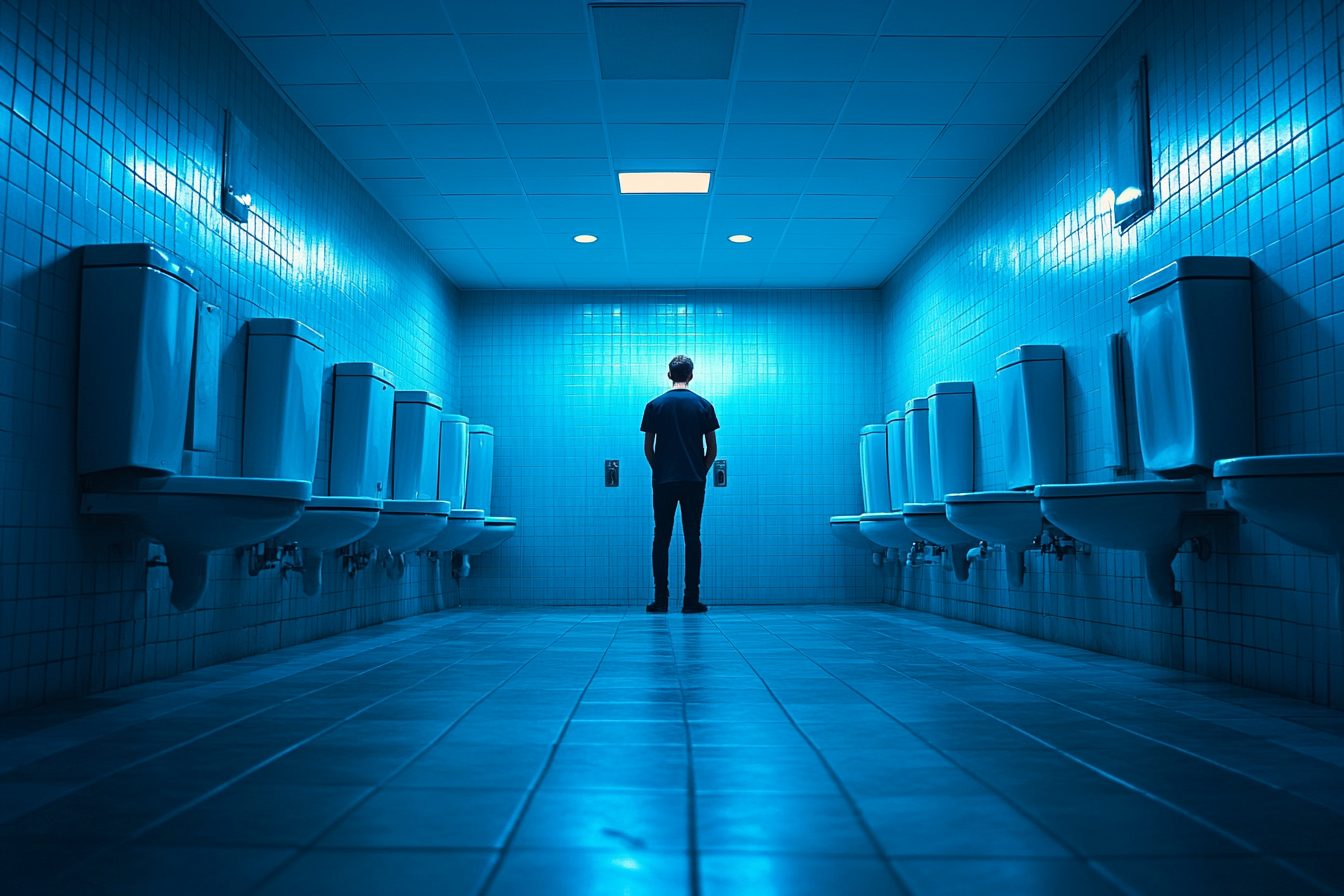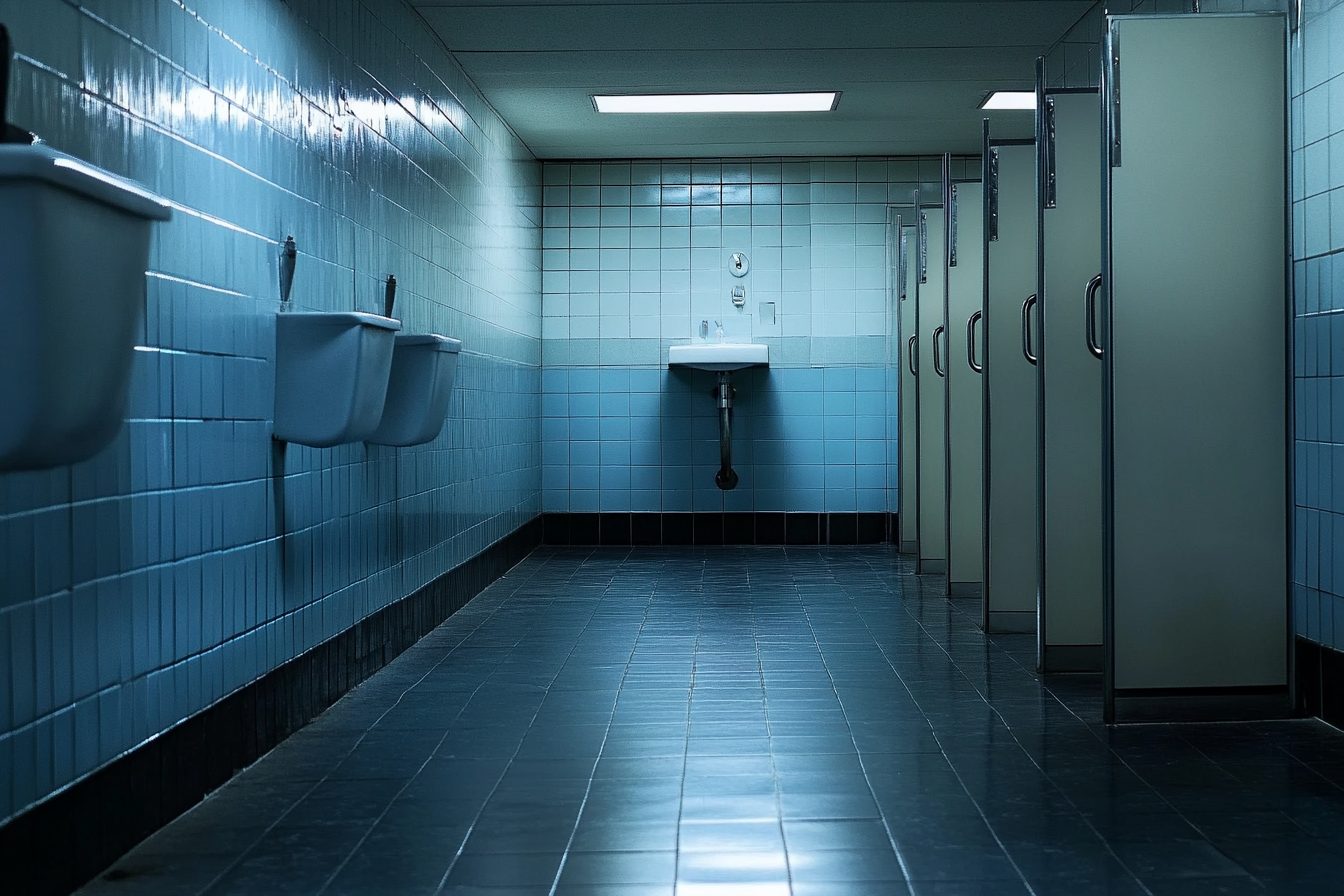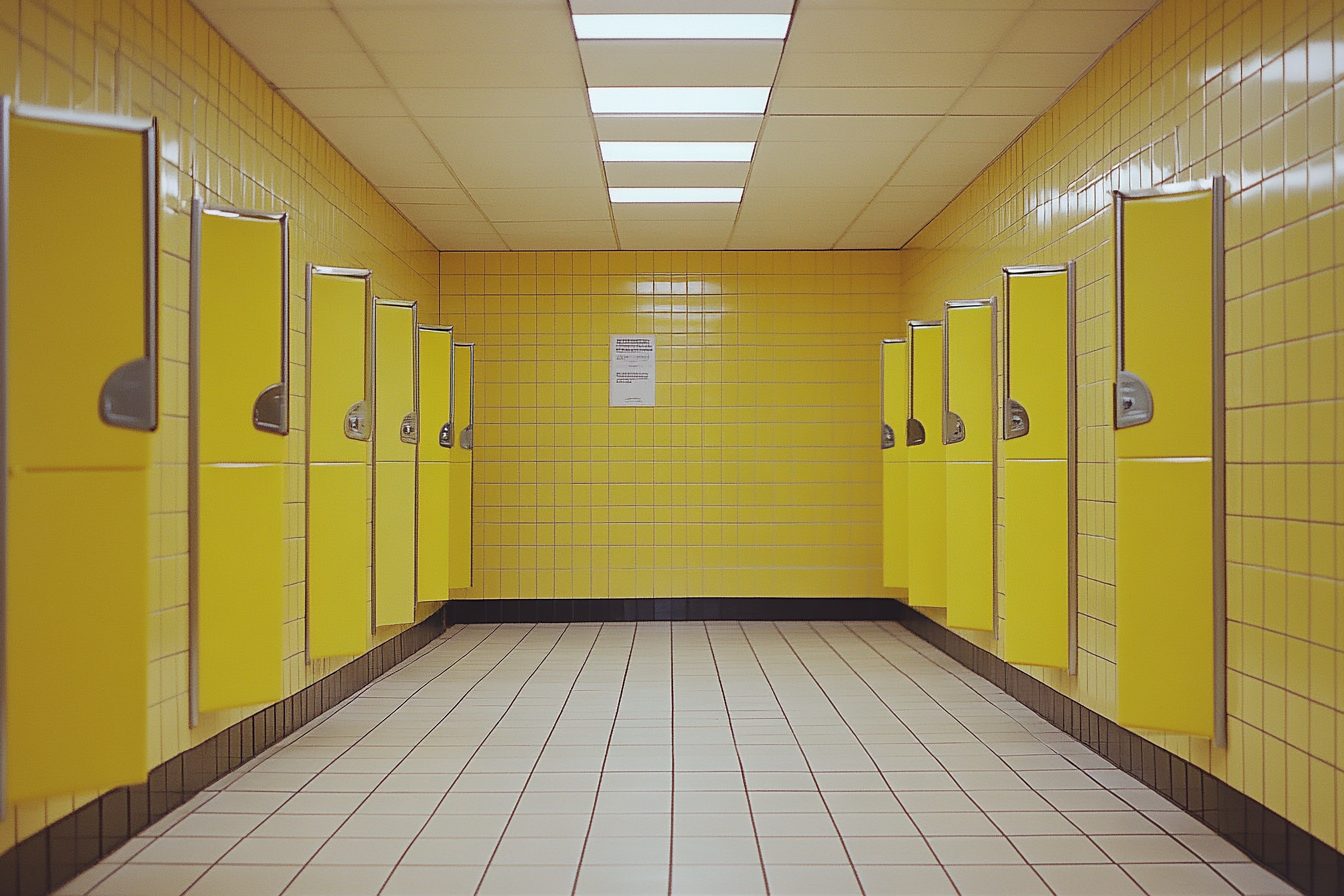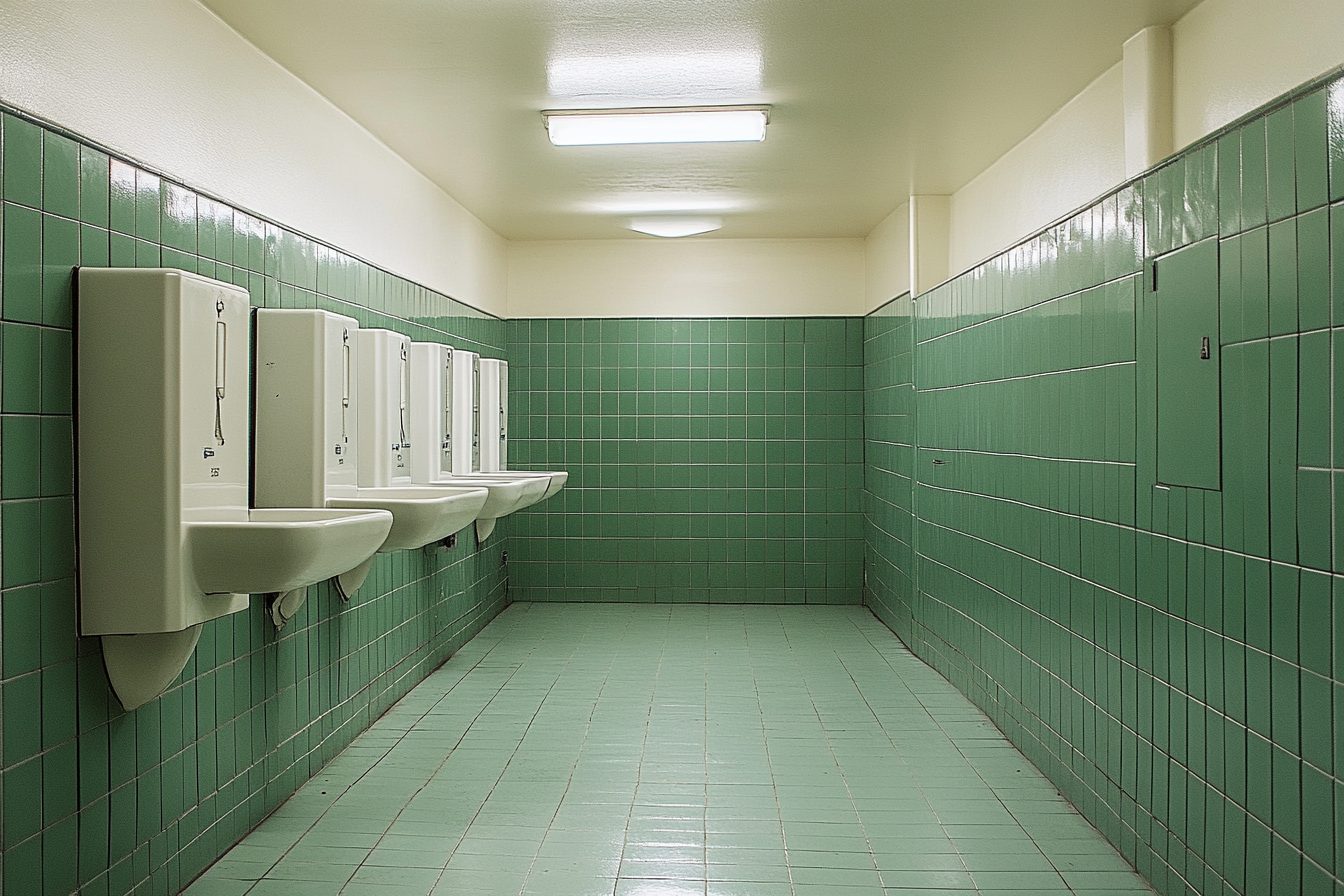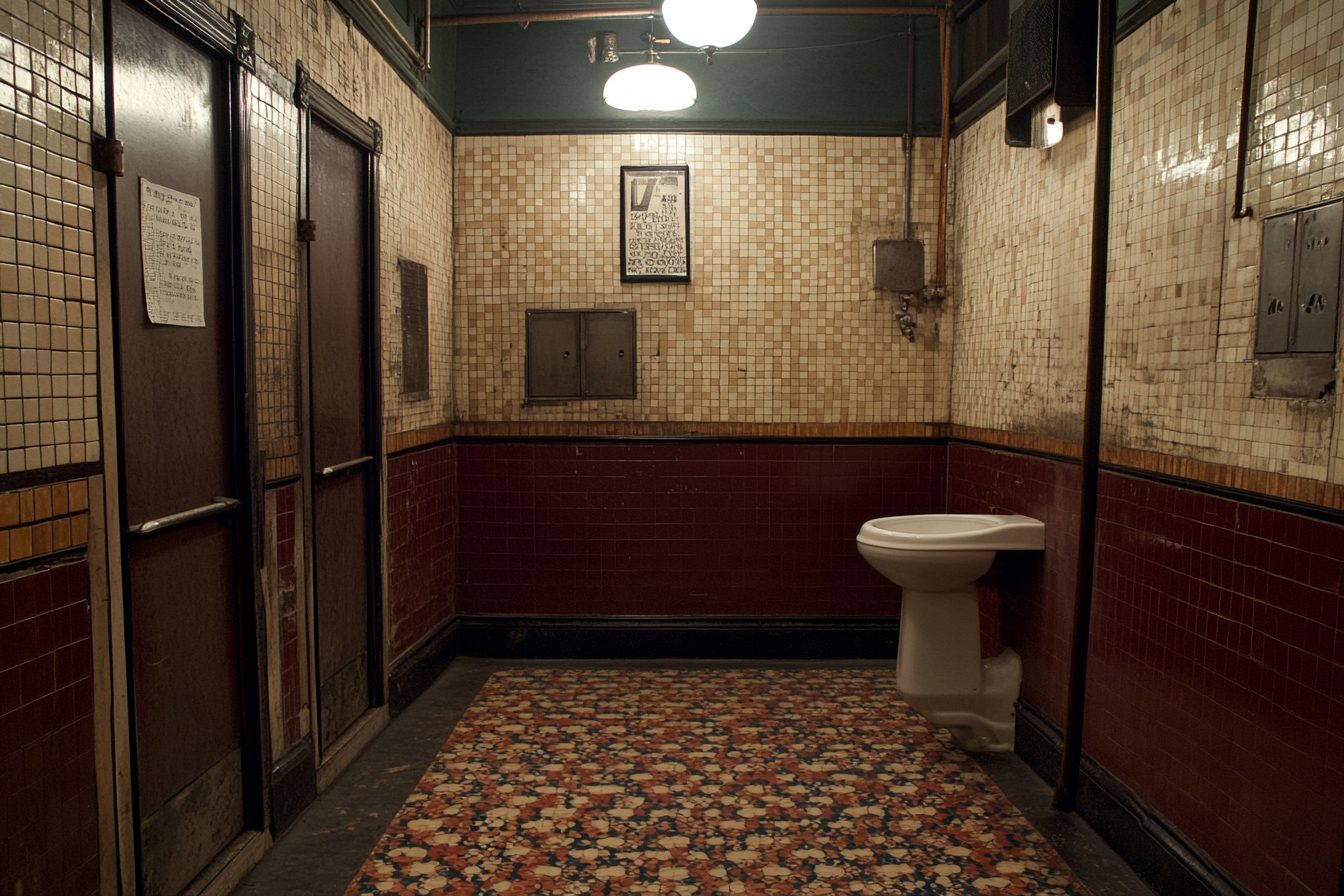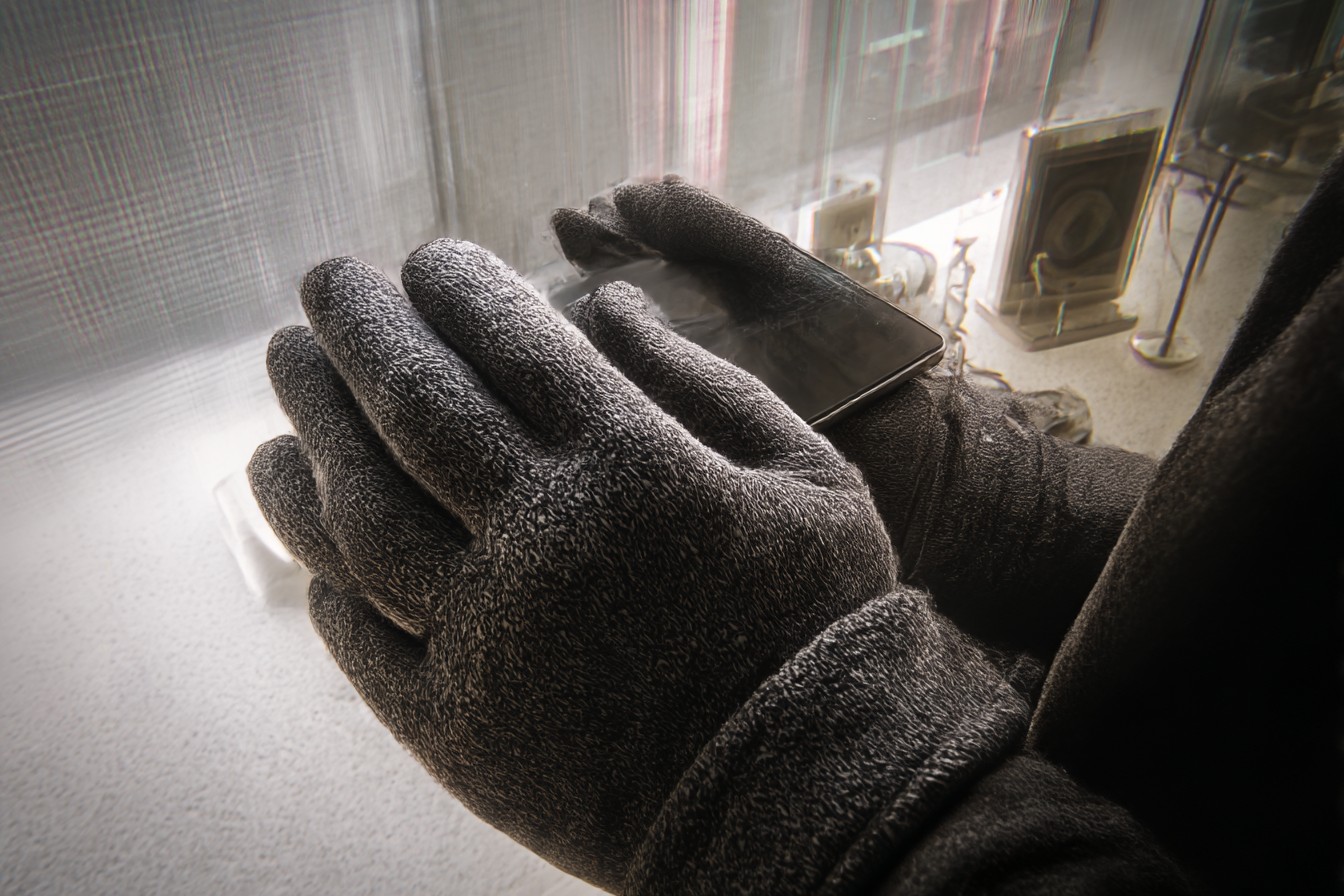There is a test of bravery that every adult around the world has to face at some point in his/her life – using a public toilet. This is a phenomenon that cuts across cultures, economies, and the level of dignity people try to maintain. Everyone comes close to that door with the same wishful thinking: ‘I pray to everything that it is clean.’ It is equal to the prayers we all say at the Canadian border, where they want to check all your belongings thinking that you are smuggling something.
Business travel often makes one creepy rest stop somewhere on the Boston – New York highway, one of those I encountered last month. Walls paints hinting absolutely nothing about the horrors bound to lie within. When I pushed open the door that said Men, I performed the second nature danger anlaysis that any war veteran would do.
There is a distinct type of horror that lurks in restrooms and toilets, horror that goes beyond imagination. First, my eyes searched for puddles that are indeed not of water. The outcome wasn’t the best.
It wasn’t tragic. I have seen worse at some nightclubs or sports stadiums, but it could definitely use some improvement. That also goes for the restrooms that claimed to be cleaned ‘hourly’ at the entrance of the building.
Unless that sign has been up since the Reagen Administration, in which case, I don’t want to imagine how little they staff their cleanings. What interests me about public restrooms is not so much how clean or dirty they are, but the behaviors people exhibit that are not openly discussed. For an example, men standing at spacious urinals often focus on something out of arms reach, preferably the wall in front of them.
Men also have a tendency to stop conversations suddenly as soon as they step into the bathroom. They resume as soon as the door opens. Pretending you are alone in a public space is a feat that requires a lot of skill.
My buddy Bernard – a dude so uptight he irons his socks – claims he has constructed what he calls a “restroom reconnaissance strategy” for public facilities. He claims that he has a better version of what he refers to as “The wife sending ahead system.” “If the women’s room is bad,” he explains, “the men’s room will be apocalyptic.” The theory is that a woman’s room will give clues about the men’s room. Under the brunt of every wife’s ever-elusive sentiment, “My husband can never be right,” Bernard has come to utilize and truly believe in his strategy.
If Bernard can avoid it, he outright refuses to consume food while travelling in public spaces under the pretense of not having a functional outside bathroom. Instead, he meticulously plans his bathroom breaks in collaboration with ritzy hotels he can graze through like the resourceful prince he sorely thinks of himself as. As a result, his misshapen bladder raises my eyebrows sorely.
The first and most crucial decision in choosing a restroom is where I install myself. This tall order requires eerily perplexing computations. The restroom’s location before moving (enables me to flee with great speed at any moment), the last time the restroom was in use (wet portions make me ponder things I would rather not), as well as the general state of the porcelain.
Some stalls possess a level of surface neglect which speaks to ghostly creatures from dilapidated gothic novels. Like most rational beings, I like to think of myself. The other day when I went to a department store restroom, I saw a middle-aged man walk around the stalls multiple times, as if sizing them up.
He seemed to have acknowledged my presence through the mirror. A silent communication formed between two experts. He slightly nodded, and he too was attuned to the fact that we both share the same mission of attempting to win in the evils of this china piece of art.
Then there is the touch minimization. Oh, the evil game we all play unconsciously, trying to limit the surface area of which we touch. I’ve seen adult males awkwardly manage using elbows, feet, or even clean toilet paper to touch faucets and soap dispensers.
When leaving public restrooms, my technique involves a complex maneuver that covers elimination of natural direct contact with the door. Over decades I’ve done this, and perfected it to allow for smooth movements with counter as a trained medical practitioner surgeon. The very paper towels transforms into a much sought after item in this unfriendly world.
Too weak to efficiently absorb water, but crucial for maintaining cleanliness and also for the escape sequences. I’ve seen myself strategically considering the minimal number required to both dry and effectively barricade for purposes of opening the door. In bathrooms with just the air hand driers, a dreadful insult on mankind by cruel designers, I’ve thought about using my shirt rather than touching the doorknob post hand wash.
By far the worst offenders in the public restroom experience are, undoubtedly, those found in gas stations on secluded highways. These facilities reside in a fuzzy area between civilization and pandemonium with their very own set of rules. I once went to such a place in rural Pennsylvania, and it had a sink that I swear had been transformed into a fishing bait bucket.
There was a sign written in marker saying “wash hands in toilet tank.” I opted for dehydration instead. In contrast, the bathrooms we see in posh hotels are the best in public hygiene. With their marble sinks, cloth towels, and attendants who quietly observe how well you wash your hands, they indulge you in a break from the usual humiliation.
I appreciate the cleanliness of the Four Seasons hotel so much that I spent around twenty minutes in there, and the attendant had to ask if I needed medical assistance. Instead of trying to explain myself, which would undignify me, I went out giving her a tip. What amuses me the most about public toilets is the actions they bring into otherwise genteel people.
When these very people step out of their homes, they are ready to throw around used paper towels and not bother cleaning the area they splashed water around. It’s baffling. It seems like the moment someone steps in a public restroom, they lose all their manners.
My workmate Richard is an accountant and enjoys having everything organized around him. He once told me, after a few too many drinks, that he doesn’t actually sit on public toilets. Instead he hovers above the seat in a very unstable squat.
He then added with delight, “It’s a great workout for the quads”. He did a half squat at the office happy hour and the younger employees nearly choked on their food. I was both impressed by the strength of his thighs and disturbed by the way he chose to reveal this information.
Instead of improving public restrooms, modern technology has only brought about new problems. It is nearly impossible to turn on motion-sensor faucets, which seem to be set to only respond to all movements but the proper one. Those who enter the restroom while I attempt to activate these devices with my extravagant hand gestures may even think that I am a lunatic orchestra conductor.
On the rare occasion that the devices do decide to allow water to flow, they will do it for a maximum of 2.7 seconds. This is just enough time to wet your hands, but certainly not enough time to get rid of any soap. Like wise, automatic toilet flushers have developed an AI sophisticated enough that it will flush when you finish, but also precise enough that it will not flush while you are still utilizing the toilet.
The toilets flush on its own three times while I am using it, and then when I finish, it does not want to budge. Now, I am left to frantically look for the manual button which is more often than not, hidden behind the toilet like some secret. Now the challenges posed by the soap dispensers are a whole new level.
It either dispenses a flood of pink liquid that drowns half your shirt or give out a micro drop that will dry up before it even reaches your skin. There seems to be no in between. One thing I do not understand, however, is why the soap found in public restrooms is always the shade of and has the consistency of liquid cotton candy.
Not to mention, the residue smells like chemicals and makes my hands smell like I just came back from a construction site. Let me bring your attention to something about public restroom design that is particularly worrying. In America, public restrooms are sealed off using stall doors that have gaps.
This half-an-inch gap allows for the possibility of strangers making eye contact at the most inappropriate of moments. The rest of the world, including myself, has been without a valid answer to this question. Is this gap meant for privacy?
Or is it a way for the creators to save money on materials? Or is it a psychological experiment meant to determine how many people can stare without making it obvious? No matter the intent, this has resulted in a lot of uncomfortable situations for all parties involved.
Tom, one of my neighbors who works a lot, likes to travel a lot, and for that purpose has a personal curated list of bathrooms. His selection is based on cover, cleanliness, privacy, amount of paper provided, and most importantly – how hands tend to be dried after the cleaning process. “Five star bathrooms are not exactly common,” he said to me, “but the few that are actually exist certainly are memorable.” Instead of doodling on paper, Tom stores this information in his phone.
To me, he comes off as someone who is very skeptical. He also reminds me of those medieval maps that warn sailors of sea monsters. Even with these problems, public lavatories are crucial to a society’s infrastructure–places that we often have to share at the most sensitive points of our lives.
Public toilets form what some sociologists refer to as “a social contract.” We provide these essential facilities, and in exchange, we only ask that users keep them in a condition for their own use. The frequency of violation of this social contract speaks volumes about the human nature. As I left the highway rest stop, having dealt with it with minimum contact and maximum efficiency, I found myself wondering how all of us are linked by this dull experience.
Every person from a Chief Executive Officer to a janitor has to step into these unknown places at times, and the only thing in arms is a hopeful attitude along with a small bottle of hand sanitizer. The pursuit of an acceptably clean public rests continues; it is a journey where the spoils of victory are won seldom. We soldier on to our objectives, fueled by necessity and the unfounded optimism that it must be behind the next door we push open.
A public toilet which we would actually consider using.

